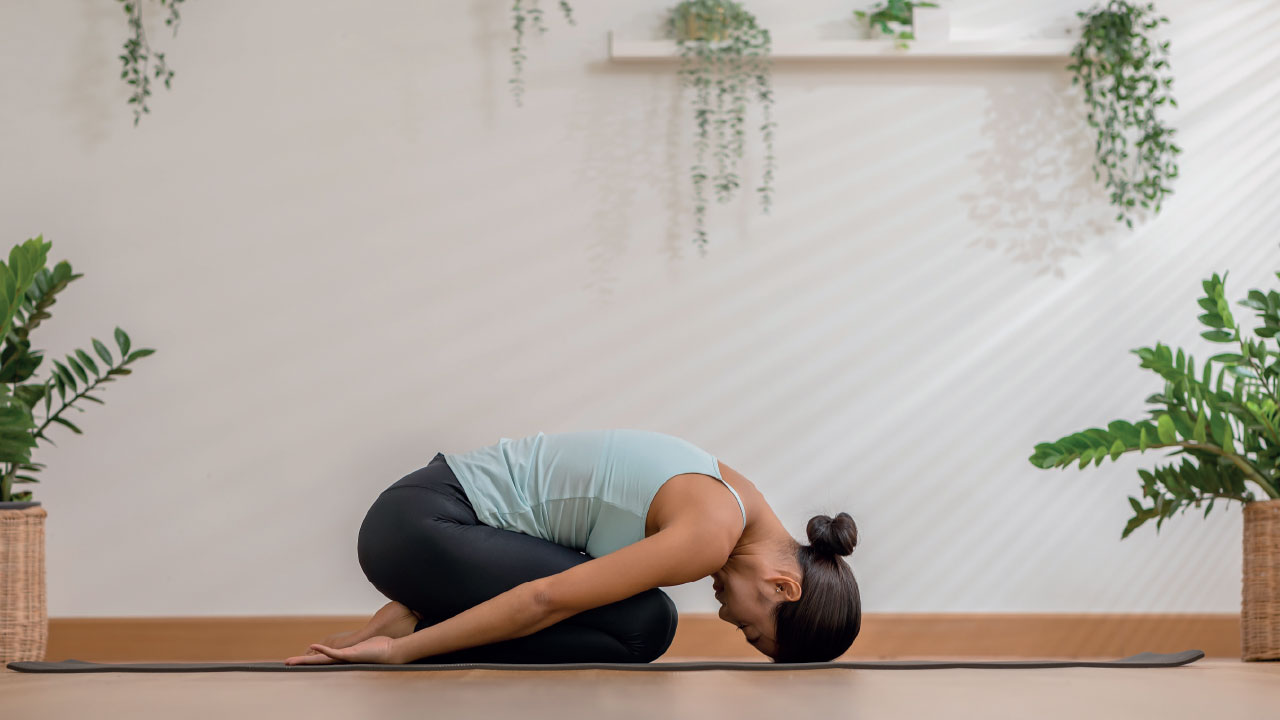
Trauma Informed Somatic Hacking
How to bypass your mind and tap the healing power of your body. By Aimee Rai
Those of us who practice yoga know the power of movement, but learning to tap the healing power of the body moment to moment is a different skill. We live in a world that is mind-centric. We refer to anxiety, depression, addictions, or low self-esteem as ‘mental health’ issues, but much of what we struggle with is more somatically driven (body based) than we might think.
To apply a somatic approach wisely, we need to begin to see ourselves through the lens of the autonomic nervous system (ANS). The ANS comprises of two branches, the parasympathetic and the sympathetic. In yogic terms we understand these as Ida, the feminine channel and Pingala, the masculine channel. The parasympathetic branch acts as the brake: cooling, calming, slowing, soothing.
The sympathetic side is our accelerator. It is activating, energising, and generates our ‘fight or flight’ ability in the face of perceived threat. When both branches are in balance, we feel relaxed, energised, playful, clear minded, and tend not to feel too overwhelmed even by challenging things. This state is called ventral vagal.
When situations overwhelm our nervous system’s capacity to cope the stress gets stored, and we become stuck in sympathetic dominance. We experience anxiety-based symptoms such as worry, addictive patterns, overthinking, restlessness, insecurity, digestive problems and so on. Our fight response can make us shout when we don’t mean to and our flight response can cause us to scroll avoidantly on our phone or run from confrontation, obsessively pleasing, and swallowing our needs.
It isn’t sustainable for the body to stay in this state so if the stress remains unprocessed, it will go into collapse. In this state, known as ‘freeze’, or dorsal vagal, we experience symptoms like fatigue, depression, shame, voicelessness, the feeling of being trapped, or not having a choice. Low blood pressure or metabolic issues are also related to dorsal vagal state.
At this point it is probably useful to ask: Why we are so stressed and dysregulated? Some of the stress we experience is because of current life pressure. The modern world is undeniably demanding. However, most of our nervous system dysregulation tracks back to emotional or physical traumas of varying kinds, often from childhood. In the words of Dr Peter Levine: “Trauma is a fact of life”. There are many ways we can begin to heal and regulate the nervous system but here are a few simple somatic hacks to get you started:
1. SOFTEN
Trauma and tension are synonymous. In a stressed or collapsed nervous system state the muscles in the body are tense either activated or frozen. Noticing how often throughout the day we are holding subtle tension and simply letting it go softening – allows the body to move back toward ventral vagal balance.

2. RUN!
When we struggle with anxiety-based symptoms, we often focus too much on trying to soothe the feeling rather than allowing it to discharge itself. Running on the spot allows us to access healthy flight. Rather than fleeing our feelings in addictive behaviours or obsessive thought loops, we literally run, very intensely, for about 30-60 seconds. Equally, if our nervous system is in collapse and we suffer with exhaustion, low mood, or feelings of being stuck, then the thing that feels the hardest is the fastest way to create change – we have to move. Running on the spot breaks us out of immobilisation and reignites a sense of power and choice.
“If we suffer with feelings of being stuck, we have to do the thing that feels hardest — move.”

3. TAKE A POSTURE OF SURRENDER
When the nervous system is in overdrive it can be incredibly hard to stop or slow down. If we feel stressed, overwhelmed, or notice that we struggle to take time out, we can practice taking a posture of surrender for just one or two minutes a day. Hang forward like a rag doll between work calls, randomly lie down on the kitchen floor savasana-style or take a child’s pose with the palms upturned. Breathe. You will notice that the postures themselves generate feelings of relief.

4. PUT YOUR HAND ON YOUR HEART
When we are suffering the impact of emotional trauma a lot of the charge in our system is connected to repressed emotions. Most of us think what we feel – which isn’t possible…feelings are felt, and they live in the body. So, when we notice we feel out of sorts in any way, just placing a hand on our heart will bring our attention out of the head and down into the body. We might ask ourselves quietly “what am I feeling” or “how am I really?” This simple gesture also encourages us to let go of shame and cultivate a more loving relationship with ourselves.
Often, emotion will rise with body-based practice, so we need to tread gently in what can be unfamiliar territory. For example, working with the voice has a very soothing effect on the nervous system and can be incredibly healing for those of us who struggle to express ourselves. But it can also feel frightening, because the silence has served to protect us at some earlier stage in our life. So, go easy, and don’t hesitate to seek the support of a professional if need be.
Aimee Rai is a therapist and tantric teacher specialising in trauma and somatics. She runs a Trauma informed Somatic Counselling Training through her school ISOHH – International School of Holistic Healing. Visit: www.isohh.org.uk




